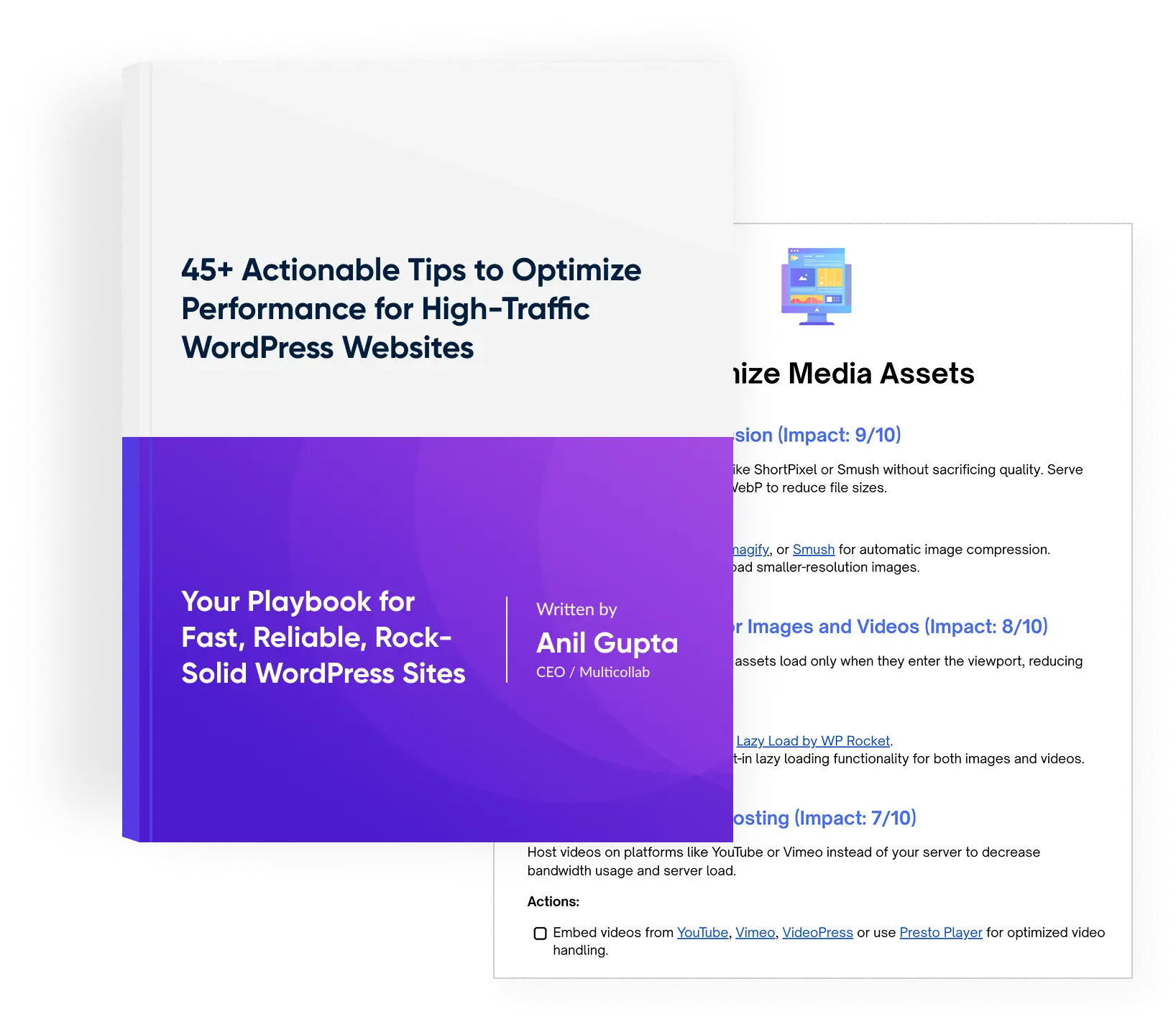Table of Contents
Creating high-quality content is essential, but managing the process can often become chaotic, especially when working with a team. For WordPress sites, the constant back-and-forth—emails, comments, revisions, and multiple drafts—can add to the complexity and drain your energy.
If you’re fed up with endless revision cycles and scattered communication, Multicollab could be the solution you’ve been looking for. This powerful WordPress plugin is designed to elevate your content collaboration and creation, streamlining the entire process.
In this blog, we’ll explore the top five features of Multicollab that can transform your content creation workflow and make team collaboration smoother and more efficient.
1. Real-Time Collaboration
Imagine working on a blog post and having your entire team make edits, suggestions, and comments at the same time, all within the WordPress editor. That’s the power of Multicollab’s real-time collaboration feature. It allows multiple users to work on the same post simultaneously, seeing each other’s changes as they happen.
Example in Action: Picture this: A marketing team is working on a new blog post. The writer is drafting, the editor is refining, and the designer is adding visuals—all at the same time. Thanks to real-time collaboration, everyone can see and contribute to changes as they happen, leading to a faster and more cohesive editorial workflow.
Why It’s a Game-Changer:
Speedy Edits: No more waiting for emails or updates from colleagues. With real-time collaboration, changes are instantaneous, which means your content gets polished much faster.
Clear Communication: Everyone sees the same version of the document, so there’s no confusion about what’s been changed or suggested. It’s like having a virtual meeting room where everyone can contribute directly.
Boosted Efficiency: By cutting down the back-and-forth and streamlining the review process, you and your team can focus more on creating great content and less on managing revisions.
2. Inline Commenting
Inline commenting lets team members leave comments right within the content. Instead of sending feedback through emails or separate documents, you can highlight text and add comments directly where they’re needed.
Example in Action: A content editor spots a typo and some awkward phrasing. Instead of sending a general note, they highlight the exact text and leave a comment. The writer then revises the content based on this precise feedback, ensuring nothing gets lost in translation.
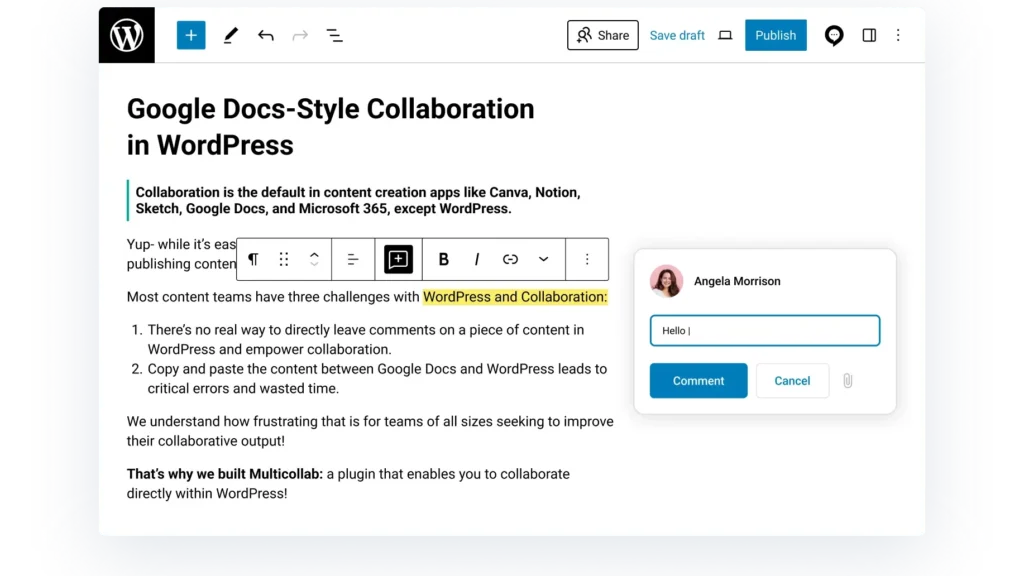
Why It’s a Game-Changer:
Precise Feedback: Comments are tied to specific parts of the text, so there’s no guesswork about what needs to be changed. Reviewers can highlight a section and add their thoughts, making feedback more actionable.
Organized Discussions: All feedback stays in one place. There’s no need to dig through separate emails or documents to find comments, making the review process much smoother.
Enhanced Collaboration: With comments directly on the content, team members can discuss changes and suggestions in context, making it easier to understand and implement feedback.
3. Suggestion Mode
What It Is: Suggestion mode allows users to propose changes without actually modifying the original text. Instead of making changes directly, suggestions are tracked and can be reviewed before being accepted or rejected.
Example in Action: During a content review, a team member suggests a rephrasing of a paragraph. Instead of changing it outright, they use suggestion mode to propose the new wording. The original author then reviews these suggestions and decides which ones to accept, ensuring that all changes are aligned with the content strategy.
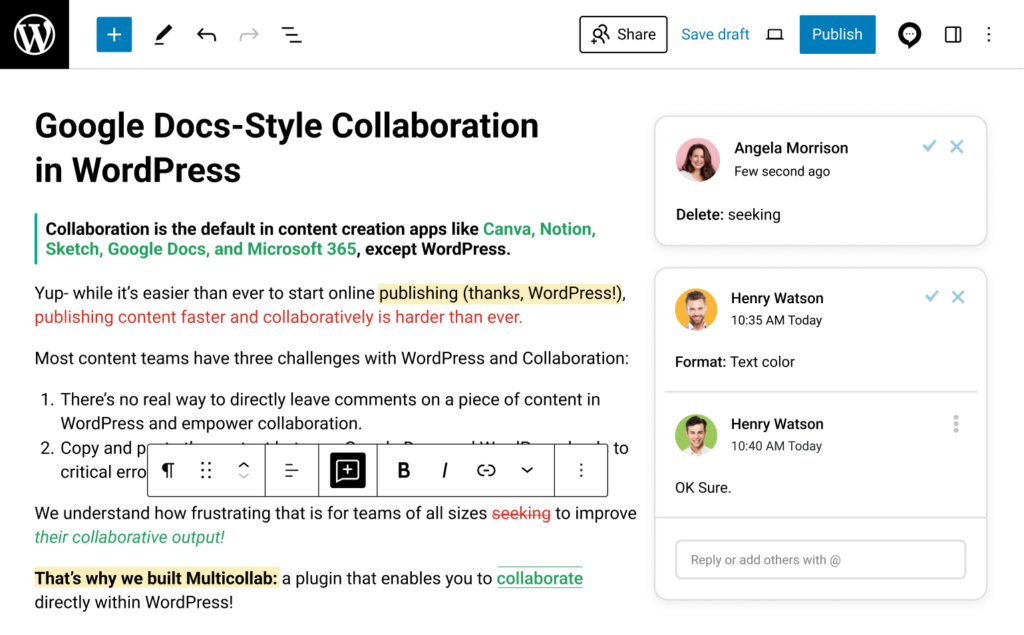
Why It’s a Game-Changer:
Controlled Changes: Suggestions are reviewed before being finalized, so you maintain control over what gets published. This helps preserve the integrity of the original content while allowing for collaborative improvements.
Clear Revision History: Every suggestion is tracked and attributed, so it’s easy to see who proposed what and why. This transparency helps in keeping the review process organized and fair.
Smooth Collaboration: Team members can propose edits and improvements without stepping on each other’s toes. This leads to a more collaborative environment where everyone’s input is valued.
4. Custom Permissions
What It Is: Custom permissions let you define who can view, edit, comment, or suggest changes to your content. This means you can control exactly what each team member can do, ensuring a streamlined and secure content creation process.
Example in Action: In a large editorial team, the content manager can set permissions so that writers can draft content, editors can review and suggest changes, and reviewers can only comment. This clear division of roles helps keep the workflow organized and reduces the risk of errors.
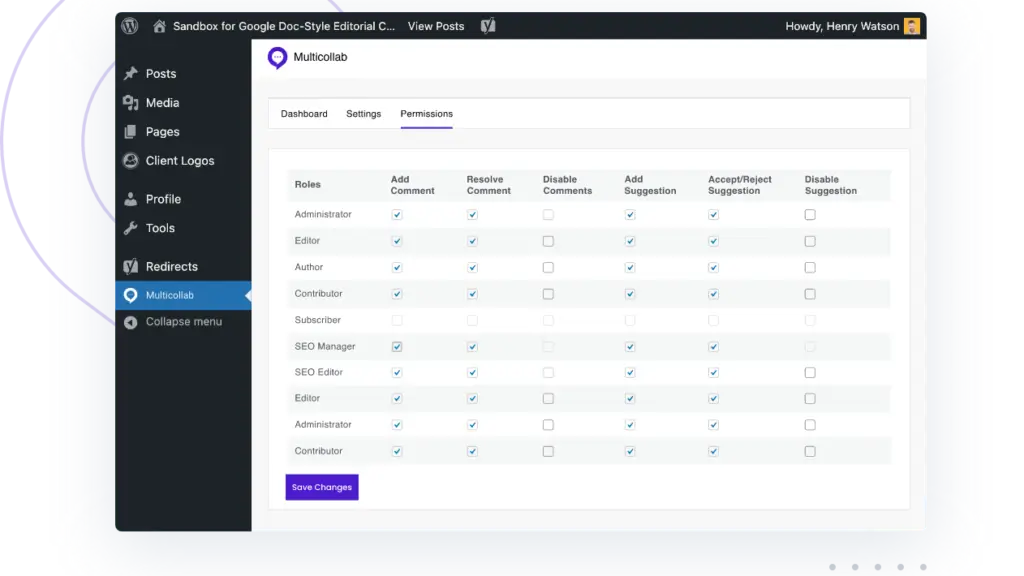
Why It’s a Game-Changer:
Enhanced Security: By controlling access, you protect sensitive content and ensure that only authorized users can make changes or view certain parts of your content.
Efficient Workflow: Different roles come with different responsibilities. Custom permissions allow you to assign tasks and manage content creation based on each team member’s role, making the workflow more efficient.
Reduced Risk: Limiting editing permissions helps prevent accidental changes or unauthorized edits, keeping your content accurate and consistent.
5. Slack Notifications
What It Is: Multicollab integrates with Slack to provide notifications about comments, suggestions, and other collaboration activities. This means you can stay updated on content changes without constantly checking WordPress.
Example in Action: When a new comment is added to a post or a suggestion is made, a Slack notification pops up. This keeps everyone in the loop and ensures that feedback is acted upon quickly, helping to maintain a steady workflow and keep content moving forward.
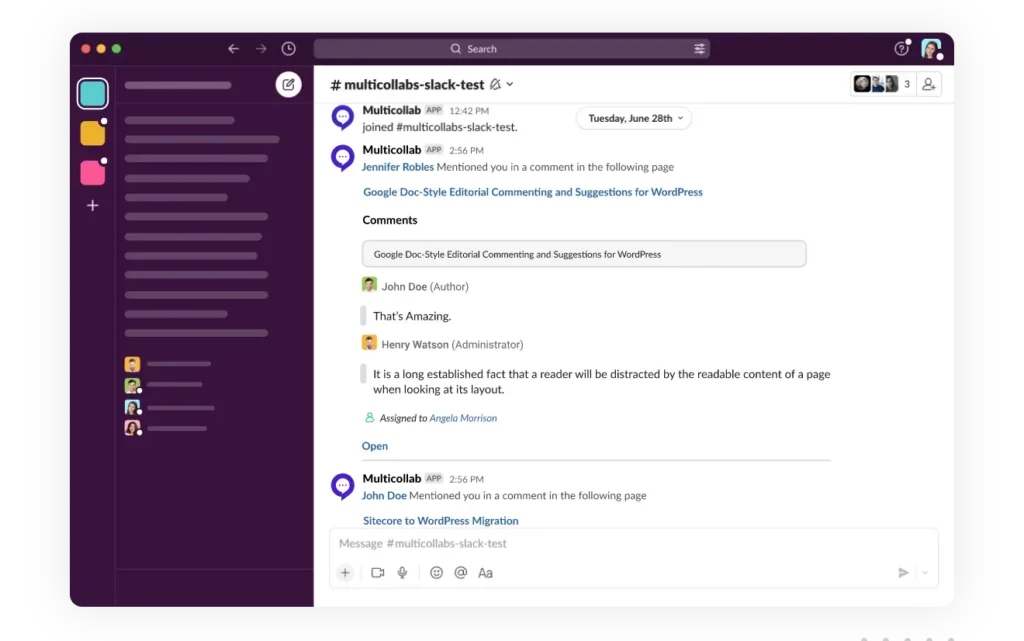
Why It’s a Game-Changer:
Instant Updates: Get real-time alerts when there’s activity on your content. This helps you stay on top of changes and respond quickly to feedback.
Centralized Communication: With Slack notifications, all your team’s discussions and updates are in one place. This reduces the need to switch between tools and keeps communication focused and organized.
Enhanced Engagement: Prompt notifications keep team members engaged and responsive, leading to a more dynamic and interactive content creation workflow.
Transform Your WordPress Content Creation with Multicollab
Multicollab is designed to make content creation in WordPress more collaborative and efficient. Its features can significantly enhance your team’s workflow, streamline the content creation process, improve collaboration, and produce high-quality content more efficiently. Whether you’re managing a large team or simply looking to optimize your content workflow, Multicollab offers the features you need to take your content creation to the next level.
Ready to see these features in action? Get started with Multicollab today and transform the way you create WordPress content!



